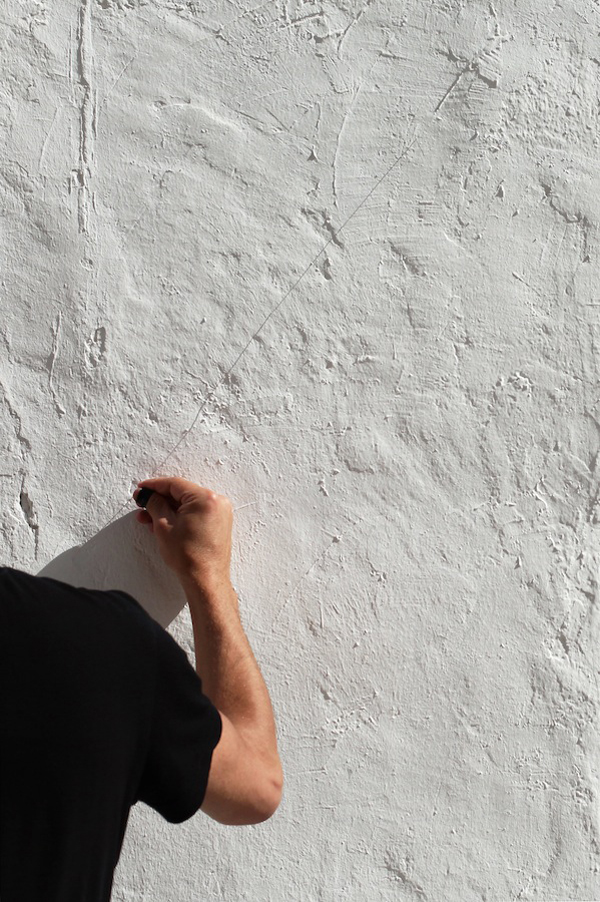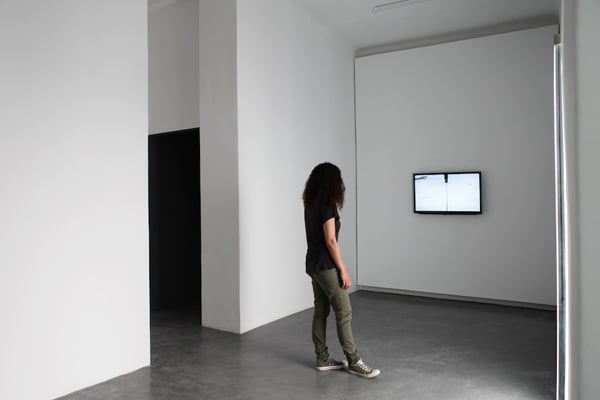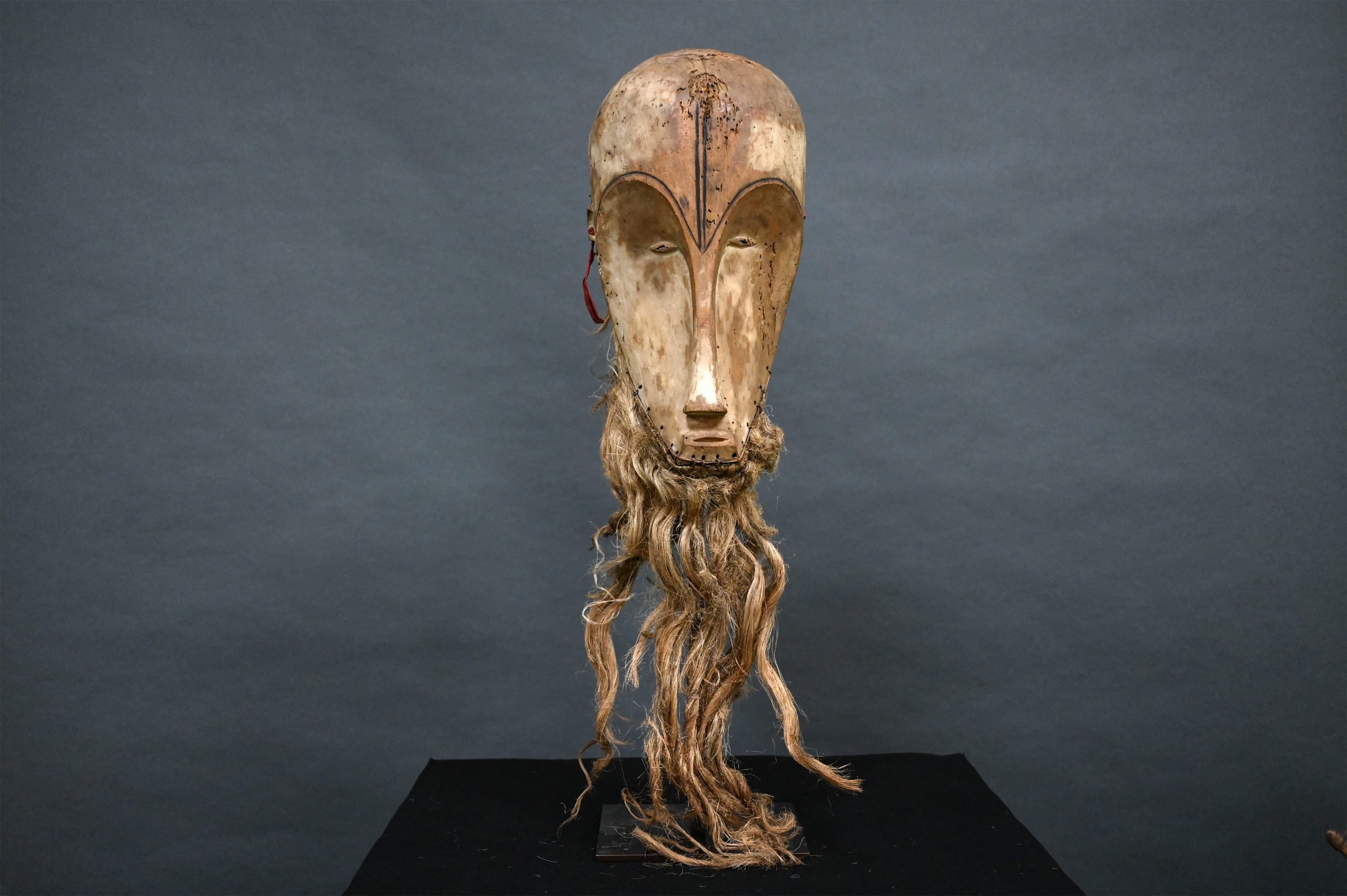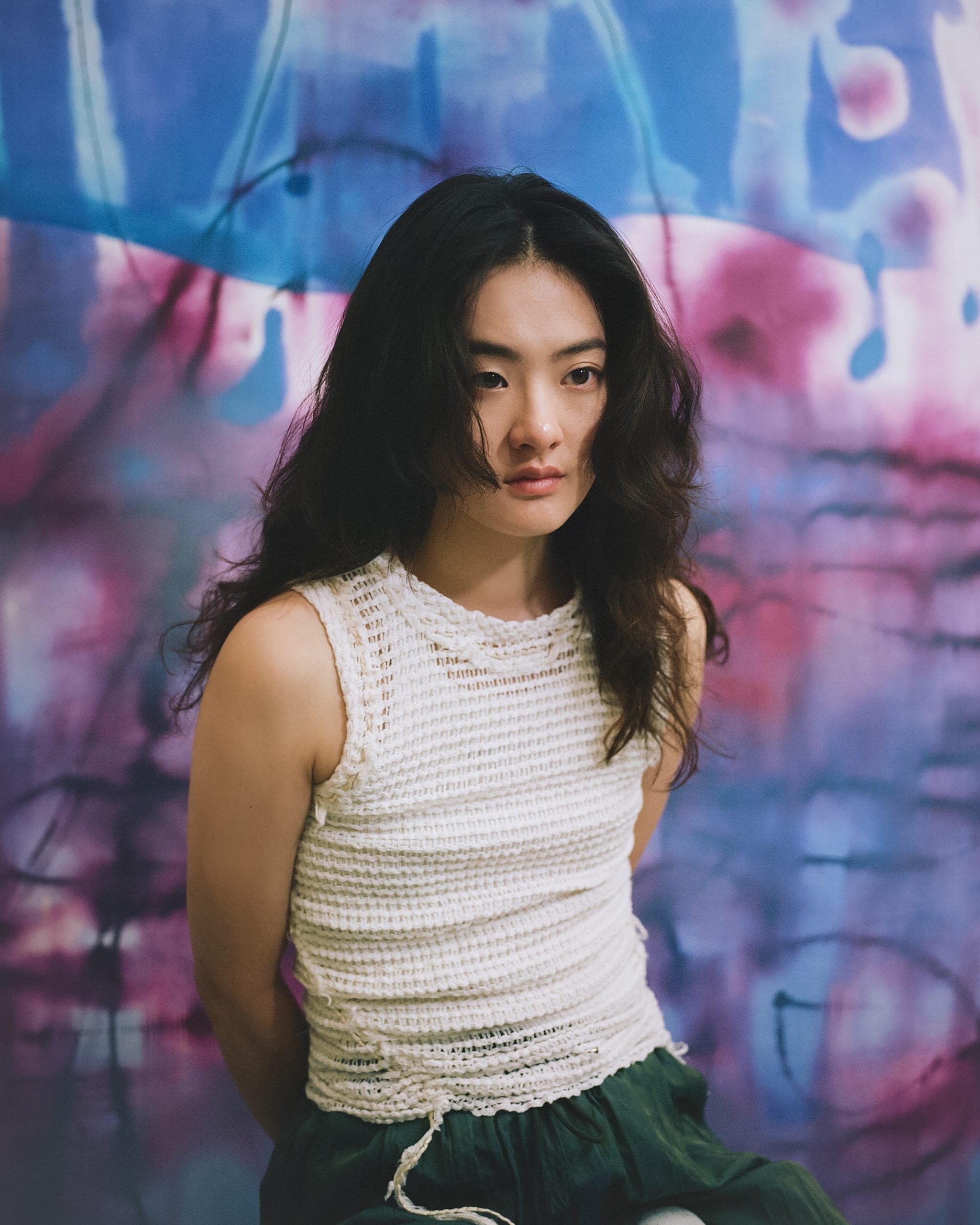

The staging of simple gestures is something of a modus operandi for Ismaïl Bahri. Preparing for a solo exhibition at Selma Feriani Gallery’s Tunisian branch in Sidi Bou Said, the Tunis-born, Paris-based artist stuck series of metal pins on the dazzlingly white walls of the ancient village. The sun determines their position: the second pin is placed at the end of the long shadow projected by the first one and so on, until, for a fleeting few minutes, a whole line appears on the surface. As the earth rotates, the line breaks up and gradually vanishes, reappearing the following day ever-so-slightly transformed by the time elapsed—literally a shadow of its former self.
It’s safe to assume that few will ever notice these tiny interventions. In Sidi Bou Said, tourists are far too busy gawping at the azure wooden doors while hawkers hawk and everyone else gets on with their business. Yet the pins’ mere presence conceptually fastens the show—Bahri’s first in his native country—and the artist to its location. One could almost imagine a game in which the pins function as so many discreet signs leading a curious visitor to the hilltop gallery. Inside that gallery, the same drastic economy of means governs every single piece of work. Bahri investigates the barely-there, the almost-nothing, and in some cases the already-gone. In an internal courtyard, tiny drops of water run alongside a thread hanging between a plastic jerrican high up in one of the widows and the thread’s spool on the floor. This dynamic installation, entitled Coulée Douce (2006-12), is constantly redefined by the weight of the water it carries by capillarity. The clepsydra is an obvious reference here, but the regularity central to time-keeping has been replaced by a much more organic rhythm defined by the only approximately controlled container’s aperture.

Ismaïl Bari, Coulée Douce (2006-14)
Photo: Courtesy the artist and Selma Feriani Gallery
In a country busy finding its feet in the aftermath of the 2011 revolution—where the contemporary art scene is slight and much of it is still struggling to fully shed the weight of its French-influenced modernist roots—Bahri’s proposition feels particularly radical. It champions the aesthetic potential of the infinitely modest. The delicate motif of the drop crops again in the video Ligne (2011), in which a tiny bubble of translucent liquid is shot close up, resting on a vein on the underside of a wrist. The liquid pearl pulsates with each heartbeat, confirming and measuring life as it happens. A possible game of equivalence surfaces between the film’s heartbeats and those of the one looking at them. We might even briefly indulge in thinking that they might end up in unison, a companionship as physical as it is imaginary.
The feeling of equivalence might not be as whimsical as it first seems. Bahri’s starkly reduced visual language makes for challenging viewing. This is, of course, part of the point. The work demands time as much as it encapsulates it, only revealing itself fully to those who have invested enough. In the video Dénouement (2011), a black thread splits the screen in half. For many long minutes, it’s only an enigmatically minimal perspective, inviting the eye to reach beyond the limits of the frame. Yet progressively, a pair of legs appears, as if pulled in to the camera by the thread. A faceless character comes closer and closer, eventually showing a pair of hands clumsily knotting the woolen line. It comes so close to the lens that it ends up occupying the screen entirely and eventually obliterates the image altogether.
Dénouement is characteristic of the artist’s ongoing interest in cinema, or rather what he describes himself as “pre-cinema,” that is, the capture of a movement reduced, like in the early days of the medium, to film’s fundamental elements. Bahri’s piece is all light, perspective, frame, and the unspooling of the film roll, mirrored in the picture by the winding up of the thread. The moving images’ inner workings are deconstructed and exposed. But rather than demystifying the process, Bahri manages to infuse it with a striking sense of the poetical. Dénouement could be read as an ode to cinema, to space, and the difficulty of making.

Ismaïl Bari, Dénouement (2011)
Photo: Courtesy the artist and Selma Feriani Gallery
In the series of short black and white video Film (2011-12), a rolled up triangle of Arabic newspaper unfolds on a glassy dark surface, which turns out to be a pool of black ink. The paper soaking the liquid in provokes the movement, giving it a beguiling slowness. Seeing this in post-Arab Spring Tunisia, it is impossible not to look at these without thinking of the seismic events that recently shook up North Africa—particular when the face of ousted Egyptian president Hosni Mubarak briefly flashes up before being swallowed up by the darkness. But Bahri doesn’t venture further down the political road. The unfolding of news taking place on the screen remains primarily formal.
Much in tune with his understated approach, political positions in Bahri’s work, when they emerge, never take the form of explicit statements. Percée (2014), the video projection that closes the show, is a case in point. Shot in the lead up to the exhibition, it takes up an entire wall. A dark surface appears to flap in the wind, most of the time entirely blocking the image, but here and there revealing a street scene in the suburbs of Tunis. Importantly, it isn’t the picturesque Sidi Bou Said, much loved by exoticism-seekers, but a mundane neighborhood. With this last gesture, Bahri metaphorically opens up his show to the entire city. Having started by weaving the exhibition into its direct environment with the pins, he reaches towards Tunis’ much larger, and much more complex reality. The night of the opening, artist Amel Ben Attia said: “We haven’t had our cultural revolution yet.” While highly individual, exhibitions like Bahri’s show that things are starting slowly. A whisper can sometimes resonate as loud as a rallying cry.
Follow Artnet News on Facebook:
Want to stay ahead of the art world? Subscribe to our newsletter to get the breaking news, eye-opening interviews, and incisive critical takes that drive the conversation forward.




